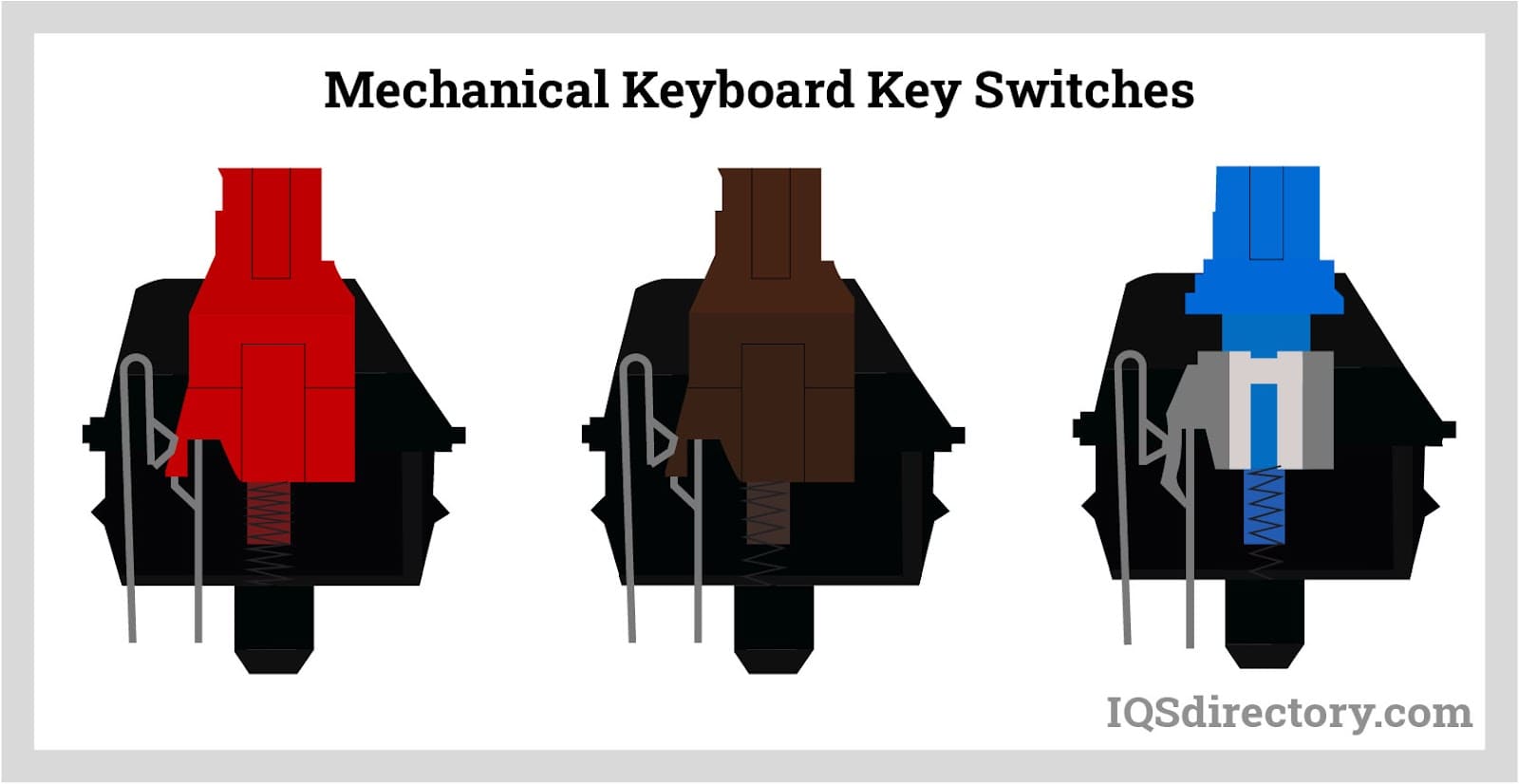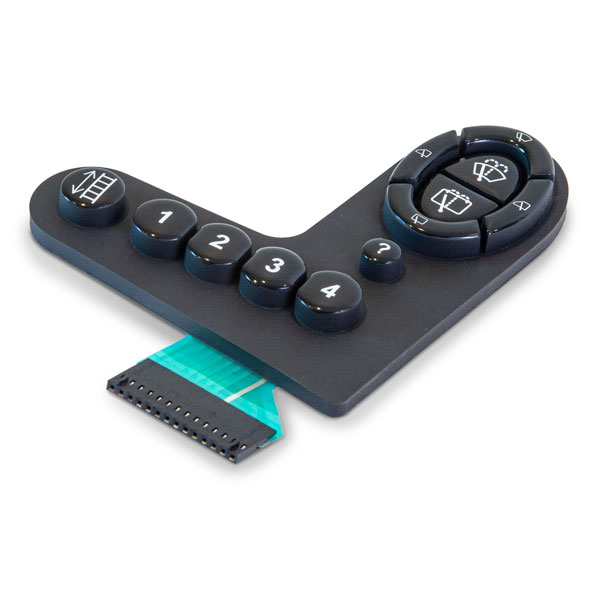All Concerning Membrane layer Change: A Comprehensive Guide for Beginners
Membrane switches are essential elements in contemporary electronics, providing a distinct interface for user communication - membrane switch. Their layered construction, including overlays and conductive traces, provides performance and longevity. Unlike typical mechanical buttons, membrane buttons offer a smooth style and adjustable options. Recognizing their crucial attributes and benefits can change item layout. The details of their application and design factors to consider necessitate more expedition.
What Is a Membrane Switch over?
A membrane layer button is a kind of electric switch that includes a versatile membrane layered over a published circuit card. This design enables a compact and smooth user interface, typically utilized in various digital gadgets. Membrane buttons are typically discovered in consumer devices, clinical tools, and commercial machinery as a result of their sturdiness and resistance to environmental factors.The construction normally includes several layers, such as visuals overlays and sticky support, which offer responsive responses and secure the circuitry underneath. The procedure of a membrane switch is launched when pressure is used to the surface area, finishing an electric circuit.These buttons are valued for their adaptability, making it possible for custom layouts and printed graphics that accommodate certain user interfaces. Their low-profile nature lowers room requirements, making them perfect for applications where traditional buttons might not fit. Generally, membrane layer switches supply a useful and visual service for contemporary digital devices.
Key Components of Membrane Layer Changes
Membrane changes make up numerous crucial elements that add to their capability and efficiency. The top layer, understood as the overlay, gives the individual interface and is often printed with graphics or signs. Underneath the overlay lies a spacer layer, which separates the conductive aspects and avoids unintended activation. The following essential component is the graphic layer, which enhances aesthetic appeals and ensures the toughness of the design.Conductive traces, commonly made from products like silver or carbon, are published on the circuit layer. When stress is applied to the overlay, these traces come right into contact, finishing the circuit. Additionally, a backing layer supplies architectural support and can be made from products such as polyester or polycarbonate. With each other, these elements create a reliable, user-friendly user interface suitable for different applications, from house appliances to industrial equipment. Recognizing these elements is important for anyone thinking about membrane layer button modern technology.
Just How Membrane Layer Switches Job
Recognizing just how membrane switches over function is essential for appreciating their extensive usage in various tools. A membrane button runs via a collection of layers, consisting of a graphic overlay, spacer, and a circuit layer. When pressure is related to the overlay, it presses the spacer layer, permitting the circuit layer to make contact and finish an electrical circuit. This activity sends out a signal to the gadget, prompting a reaction, such as activating a light or triggering a function.Membrane changes can be created with numerous features, including tactile feedback, backlighting, and custom graphics, improving user communication. Their building permits a covered style, securing the internal elements from dust, dampness, and pollutants. This toughness makes them suitable for varied applications, from consumer electronics to industrial equipment. Overall, the simpleness and effectiveness of membrane layer changes add to their popularity in contemporary innovation.
Benefits of Membrane Layer Switches Mechanical Switches
While mechanical buttons have long been a staple in several tools, membrane layer switches offer distinctive advantages that make them progressively appealing. One considerable advantage is their slim account, enabling more small designs and better versatility in item advancement. In addition, membrane changes function an uniform surface, which enhances visual allure and simplifies cleansing, making them suitable for atmospheres where health is critical.Another benefit is their resistance to dirt and dampness. Unlike mechanical buttons, which can be endangered by ecological factors, membrane layer switches supply a sealed interface that secures versus contaminants - membrane switch. Membrane switches typically have a longer life-span due to less relocating parts, resulting in boosted durability and reliability.Cost-effectiveness is also a significant benefit, as membrane layer buttons can be created in bulk with reduced manufacturing prices. These factors integrate to position membrane layer switches as a useful option to conventional mechanical choices in various applications
Typical Applications of Membrane Switches
Membrane layer buttons are extensively utilized in various fields, especially in customer electronic devices and commercial control panels. In consumer devices, they offer a streamlined, easy to use interface, while in commercial setups, they enhance toughness and capability. Comprehending these applications highlights the adaptability and functionality of membrane layer switches in modern innovation.
Consumer Electronics Gadgets
As consumer electronics proceed to progress, membrane layer switches have actually ended up being a popular option for a range of tools because of their flexibility and sleek layout. These buttons are frequently located in mobile phones, tablets, and remotes, where space is restricted and appearances matter. Their low account and customizable styles allow makers to create straightforward user interfaces that enhance the overall individual experience. Furthermore, membrane layer buttons are usually made use of in home appliances such as microwaves and coffee manufacturers, providing instinctive control options while withstanding moisture and dirt. The sturdiness and reliability of membrane layer changes make them suitable for daily customer products, making sure durability and consistent efficiency. In general, their combination in customer electronics shows a mix of functionality and contemporary design.
Industrial Control Panels
The applications of membrane layer switches over expand past consumer electronic devices, discovering significant use in industrial control panels. These switches are favored for their sturdiness and resistance to harsh environments, making them optimal for manufacturing and procedure control settings. They give a trustworthy interface for drivers to control equipment, screen procedures, and adjust setups. Membrane layer switches can be customized to match specific operational needs, incorporating functions like backlighting and responsive responses, enhancing user experience. Their anchor inconspicuous style enables integration into various equipment, while their capability to withstand spills, dust, and severe temperatures warranties longevity. In general, membrane layer buttons add to reliable and safe operation in commercial applications, showing their versatility and effectiveness sought after settings.
Considerations for Designing Membrane Layer Switches Over
When developing membrane layer switches, picking the best products is vital to assure longevity and functionality. In addition, comprehending layer view website configuration methods can greatly impact the button's efficiency and customer experience. These factors to consider play an essential function in producing efficient and reputable membrane button layouts.
Product Selection Relevance
Material option plays a vital duty in the layout and performance of membrane layer buttons. The picked materials straight affect the switch's longevity, responsive response, and overall visual. Key factors to consider consist of the substrate, which must offer structural stability while permitting flexibility, and the graphic overlay, which needs to be resistant to put on and environmental elements. Conductive materials should assure trusted electric efficiency, while adhesives have to supply strong bonding without jeopardizing the switch's procedure. Furthermore, compatibility with making procedures and end-user environments is vital; materials should hold up against varying temperature levels, moisture levels, and chemical direct exposure. Inevitably, suitable product choice not only boosts the membrane switch's performance but also adds to its long life and customer satisfaction, making it an essential aspect of the layout process.

Layer Arrangement Techniques

Regularly Asked Inquiries
Just How Long Do Membrane Layer Changes Normally Last?
Membrane buttons normally have a life-span of 1 to 5 million cycles, relying on use and ecological problems. Factors such as style quality and operating frequency significantly influence their durability and overall efficiency longevity.

Can Membrane Layer Changes Be Personalized for Specific Designs?
Membrane switches can certainly be personalized to accommodate details styles, permitting varied forms, colors, and capabilities. This adaptability makes it possible for suppliers to tailor these switches to meet unique visual and operational demands effectively.
What Materials Are Used in Membrane Change Building And Construction?
Membrane layer switches are typically built utilizing products such as polyester, polycarbonate, and glue layers. These products offer resistance, adaptability, and sturdiness to environmental elements, making certain the switches function effectively in numerous applications and problems.
Are Membrane Layer Switches Over Waterproof or Immune to Dampness?
Membrane layer switches can be designed to be moisture-resistant, making use of specialized finishings and products. However, their water-proof capabilities depend on building high quality and specific applications, making it necessary to evaluate needs for suitable efficiency in different settings.
Exactly How Are Membrane Layer Switches Over Repaired if Damaged?
Repairing broken membrane YOURURL.com layer switches commonly includes changing the influenced layer or circuit. Service technicians might likewise apply conductive sticky or use specialized repair kits, ensuring functionality is restored without total substitute of the entire switch setting up. Unlike traditional mechanical switches, membrane layer buttons provide a sleek design and customizable choices. A membrane layer button is a kind of electrical button that is composed of a versatile membrane layer layered over a printed circuit board. The operation of a membrane layer button is initiated when stress is applied to the surface, finishing an electric circuit.These switches are valued for their adaptability, enabling custom-made layouts and printed graphics that provide to details individual interfaces. While mechanical switches have actually long been a staple in several tools, membrane switches over deal distinct advantages that make them progressively appealing. Membrane buttons normally have a longer life-span due to less relocating parts, resulting in improved toughness and reliability.Cost-effectiveness is likewise a remarkable advantage, as membrane layer switches can be created in bulk with reduced manufacturing prices.